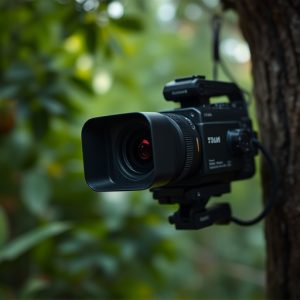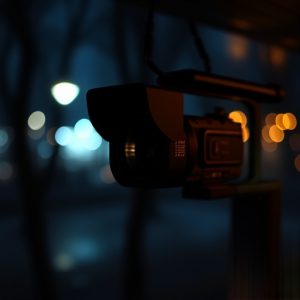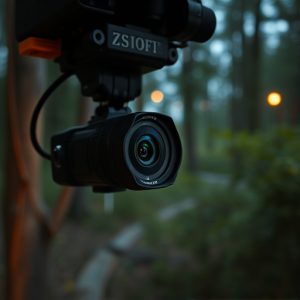Unmasking Spy Lenses: Safety Tips & Tools for Elderly Care Environments
Identifying hidden cameras in elderly care homes using spy lens reflections is a key strategy for pr…….
Identifying hidden cameras in elderly care homes using spy lens reflections is a key strategy for privacy protection. By recognizing visual cues like unusual brightness and distorted images, individuals can proactively detect covert surveillance equipment. The best hidden cameras for this setting are advanced, ethical devices that offer remote access while incorporating electromagnetic emission detection and stringent installation checks to maintain resident dignity and safety. Regular visual inspections, motion sensors, staff training, and strict room checking protocols further enhance security measures against spy lenses in these sensitive environments.
In today’s digital era, privacy concerns have led to an increase in spy lens reflection detection techniques, especially in elderly care settings. Understanding how hidden cameras operate and their subtle reflections is crucial for ensuring safe environments. This article delves into the world of spy lens detection, covering advanced techniques and best practices. Learn how to identify and mitigate these devices, focusing on the best hidden cameras suitable for elderly care, to create a secure and peaceful home.
- Understanding Spy Lens Reflections: How They Work and Why They Matter
- Detecting Hidden Cameras: Advanced Techniques for Safe Elderly Care Environments
- Best Practices and Tools for Identifying and Mitigating Spy Lenses in the Home
Understanding Spy Lens Reflections: How They Work and Why They Matter
Spy lens reflections, often overlooked but highly significant, are a crucial aspect of identifying hidden cameras in various settings. These tiny lenses, integrated into covert surveillance equipment, such as the best hidden cameras for elderly care, can capture images from nearly any angle, making them incredibly effective at monitoring activities without detection. When light bounces off these lenses and reflects back, it creates a subtle yet telltale sign that something is amiss—a phenomenon that privacy advocates and security professionals alike must be aware of.
The impact of understanding spy lens reflections lies in the ability to detect hidden cameras proactively. By recognizing the subtle visual cues, like unusual brightness or distorted images caused by reflection, individuals can take preventive measures. This knowledge empowers them to safeguard personal spaces, whether it’s a senior citizen’s home or any other private environment, ensuring that privacy and security are maintained without resorting to invasive methods.
Detecting Hidden Cameras: Advanced Techniques for Safe Elderly Care Environments
Detecting hidden cameras, especially in elderly care environments, is a sensitive yet critical aspect of ensuring safety and privacy. Advanced techniques have been developed to identify these often covert devices, which can be strategically placed in homes or care facilities. One of the most effective methods involves utilizing specialized equipment that detects electromagnetic emissions—a trick employed by many modern hidden cameras. These tools can scan for unusual signals, pinpointing their source to uncover potentially malicious devices.
When it comes to the best hidden cameras for elderly care, those that are designed with privacy and ethical considerations in mind are essential. Modern solutions offer remote access features, allowing caregivers or family members to monitor activities from afar, but they also come equipped with advanced detection measures to prevent unauthorized installation. This blend of technology ensures a safe environment while maintaining the dignity and independence of the elderly.
Best Practices and Tools for Identifying and Mitigating Spy Lenses in the Home
When it comes to identifying and mitigating spy lenses in the home, especially for elderly care settings, there are several best practices to employ. Start by conducting regular visual inspections, paying close attention to corners, behind furniture, and any crevices where hidden cameras might be installed. Utilise natural light during these checks as it can reflect off devices, revealing their presence. Additionally, use a magnifying glass or high-resolution camera to examine suspicious objects or decorations for small lenses or circuit boards.
For effective detection, invest in specialized tools designed to identify hidden cameras. Infrared (IR) detectors and UV lights are powerful assets; IR technology can uncover lenses that are invisible to the naked eye, while UV lights expose certain types of hidden recording devices. It’s also advisable to update home security systems with features like motion sensors and alarm triggers for unauthorized access, making it harder for spy lenses to operate undetected. Consider best practices for elderly care by ensuring staff members are trained in recognizing potential spying equipment and implementing strict protocols for checking guest rooms and common areas.
In today’s digital era, ensuring privacy and security is more crucial than ever, especially in elderly care environments. By understanding how spy lens reflections work and employing advanced detection techniques, we can create safer spaces. The best hidden cameras for elderly care should not only be effective at surveillance but also respect individual privacy. Through combining innovative tools and practices, as discussed in this article, it’s possible to identify and mitigate potential spy lenses, fostering an environment that is both safe and secure without compromising on personal freedom.


